Best Trees for “Fall” Color in Tucson
Do trees change color during fall in Tucson? The short answer is “no,” but the longer answer is much more complex.
In this article, we …
- explain when and why desert trees change leaf color,
- cover some ways to appreciate the changing season in the desert southwest (even without brilliant fall foliage),
- highlight the best trees for changing leaf color in the Tucson area (hint: they change color later than in the rest of the country), and
- share some good places in Arizona where you can appreciate colorful fall foliage – in fall.
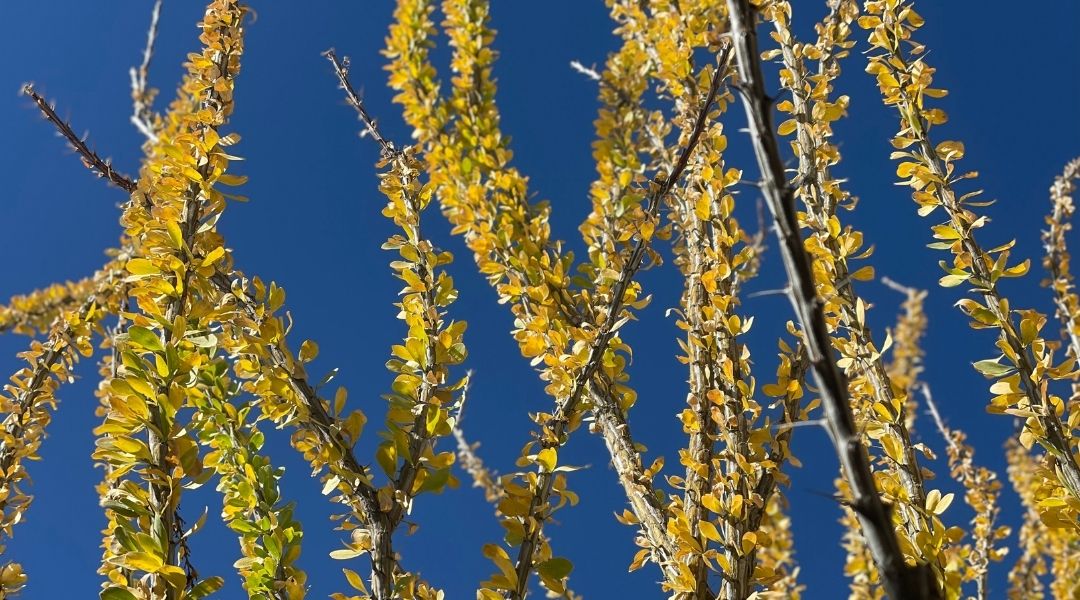
When (& Why) Do Desert Trees and Plants Lose Their Leaves?
Desert trees survive in very different ways than trees found in other parts of the country. They rely on properties such as deep roots, small leaves, green bark, and spiky branches to help them withstand hot temperatures, ongoing droughts, and unforgiving soils.
Many of our native trees are semi-deciduous (or semi-evergreen). This means they lose their leaves for only a very short time, usually during periods when less water is available.
Dropping their leaves at any time lets trees conserve their energy. Most trees cannot generate energy (through photosynthesis) without leaves. But some of our desert trees, like palo breas, use the green pigment in their branches to continue getting energy from the sun after they’ve dropped their leaves.
As any desert dweller knows, extreme heat usually happens in June, when temperatures have risen but we haven’t seen a drop of monsoon moisture yet. As a result, many desert plants and trees lose their leaves during the summer months, rather than in the fall.
Some will even drop their leaves several times during the year, depending on the amount of rainfall. Ocotillos, for example, will grow and drop leaves several times throughout the year (you can see their yellow foliage in the image above).
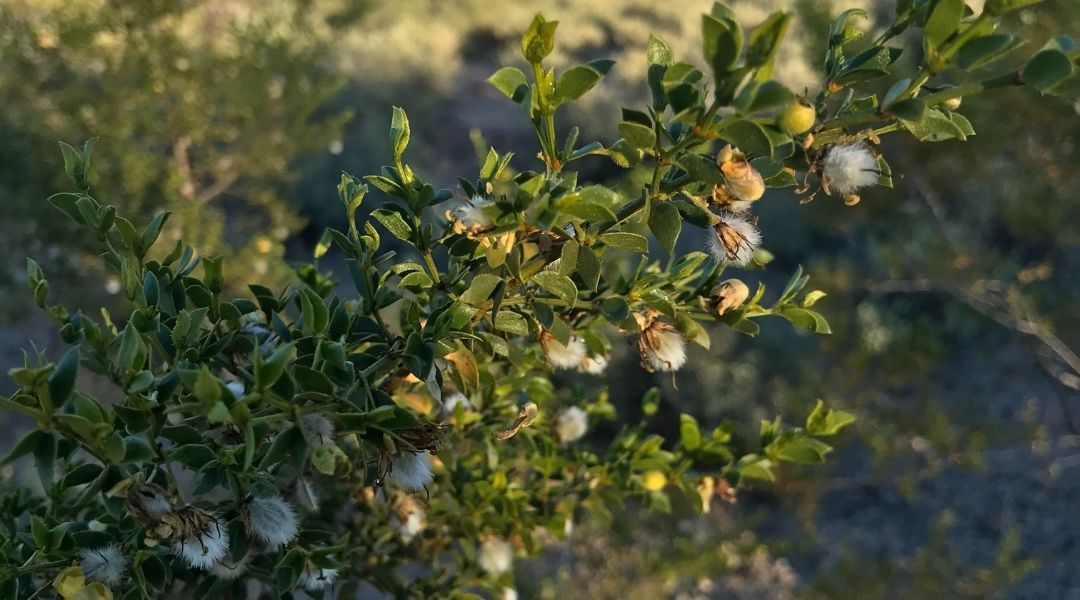
Look For Other Signs of Fall
You may have heard the joke, “You know it’s fall in Tucson when the license plates start changing color!” This, of course, refers to the return of students and snowbirds from other states, as well as an uptick in tourism as our weather reaches more bearable temperatures.
While true, this is not the only way to recognize the change in season.
Lower Temperatures
The change in temperature makes fall in Tucson one of the best times of the year to be outdoors. While nighttime temperatures can reach the 40s or 50s, daytime temperatures can still range from 60 to 90 degrees Fahrenheit.
Shorter Days
Along with the cooler temperatures come the shorter days. As Tucson is closer to the equator, our fall and winter days can be shortened by several minutes each day. For instance, on September 1 of 2021, sunrise was at 5:59 AM and sunset was at 6:47 PM. By November 30, sunrise is at 7:06 AM and sunset is at 5:18 PM.
Fall Blooming Plants
While you may picture spring as the time for plants (or trees) to bloom, that’s not always the case in the Tucson area. Check out this list of fall-blooming plants.
Fall Plant Sales/Great Time to Plant
Since fall is a wonderful time to plant trees, shrubs, or a fall garden, many local nurseries have fall plant sales. Often, public gardens such as Tohono Chul or the Arizona-Sonoran Desert Museum will have fall plant sales as well.
Outdoor Events
Tucson Meet Yourself is a Tucson event that usually falls in October where you can sample food from a variety of cultures that make up the population of Tucson. El Tour de Tucson, a bike race, usually falls in November. Many festivals, arts and craft fairs, and other outdoor events take advantage of our beautiful fall weather.
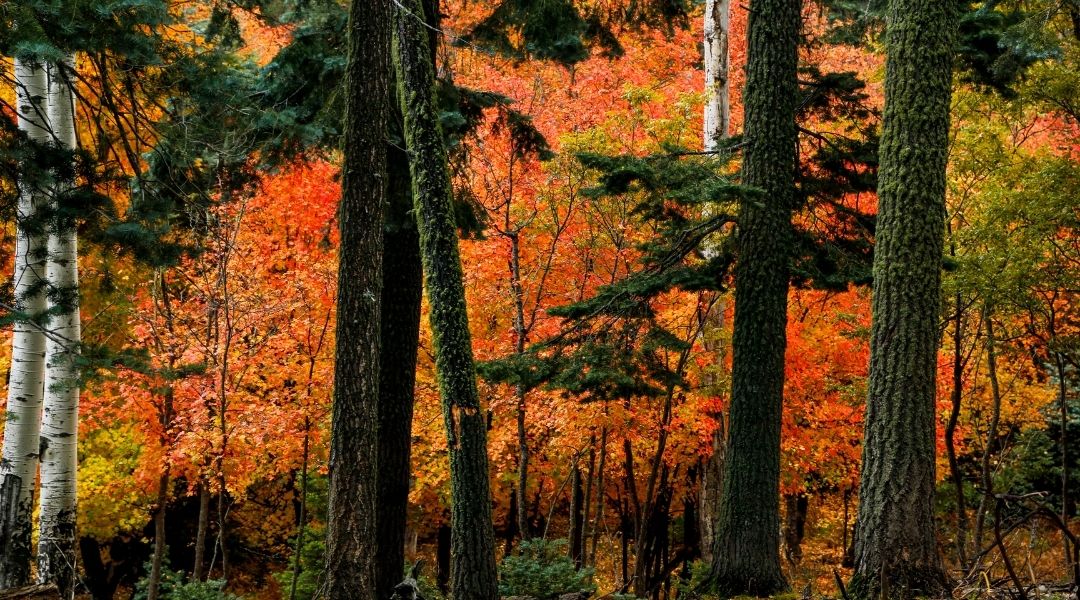
Where To See Arizona Fall Colors
If you’re truly looking for fall foliage, you don’t have to go far. Mount Lemmon is a quick drive, and the aspens, oaks, and maples change color during the fall season.
You can also schedule a trip to Northern Arizona. Flagstaff is famous for the beautiful yellow aspen leaves each fall – just be prepared for cooler weather! In 2021, there was already snow in early October.
Greer is another Arizona fall favorite, as are the White Mountains (towns like Pinetop-Lakeside or Show Low).
If you’d rather head south, Madera Canyon or Ramsey Canyon have been known to show off their yellow or orange foliage.
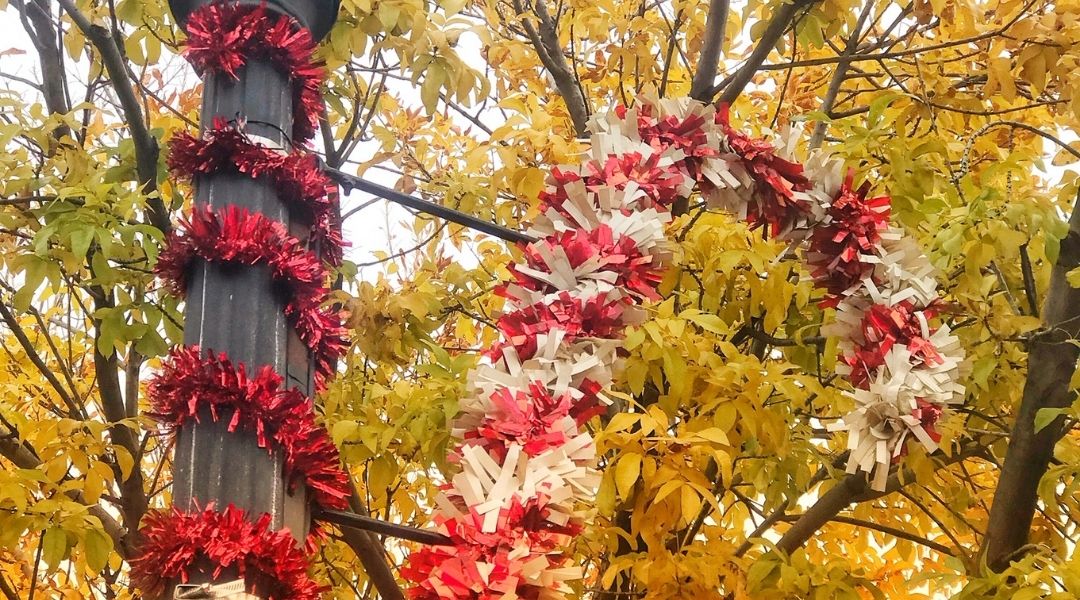
Trees with Colorful Winter Foliage in Tucson
While the title of this article refers to fall foliage, the reality is that many trees in Tucson change color later in the year, usually from November through February.
Below is a list of some of the trees that you might find in and around Tucson that show off some vibrant colors…usually around the same time that Christmas décor goes up.
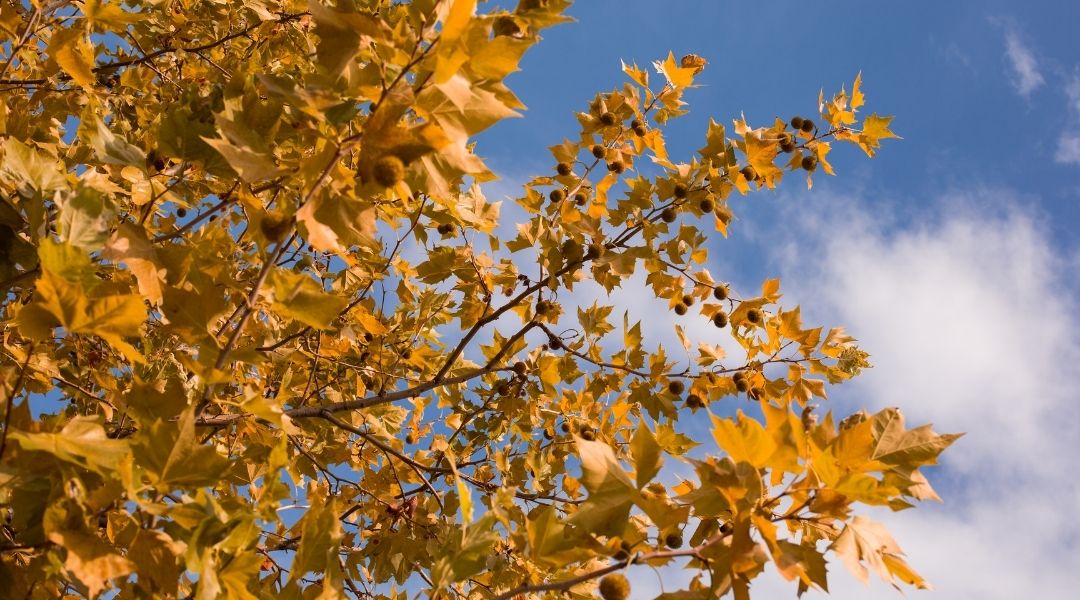
Arizona Sycamore (Platanus wrightii)
Notable features: Flaking white bark, habitat for desert birds and animals, fuzzy fruits, similar to California sycamore (P. racemosa).
Grows to: 75 feet or taller
Leaf color: Golden brown
Native to: Arizona and New Mexico
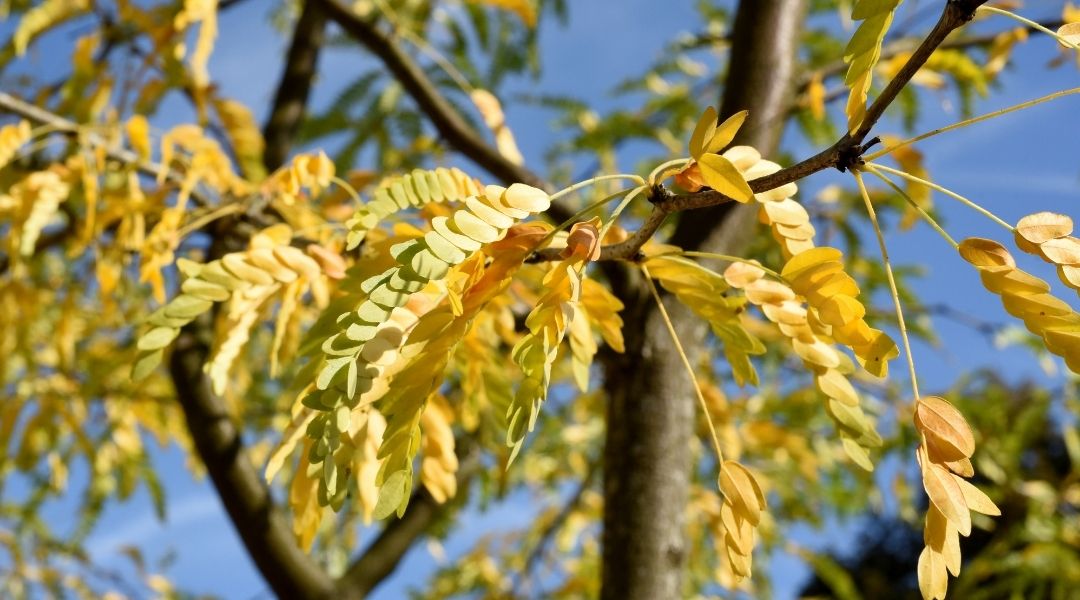
Honey Locust (Gleditsia triacanthos)
Notable features: Flat seed pods, young trees have many spines (some thornless varieties available).
Grows to: 50-100 feet (usually around 70 feet)
Leaf color: Yellow
Native to: Eastern US but suitable for zones 3-9
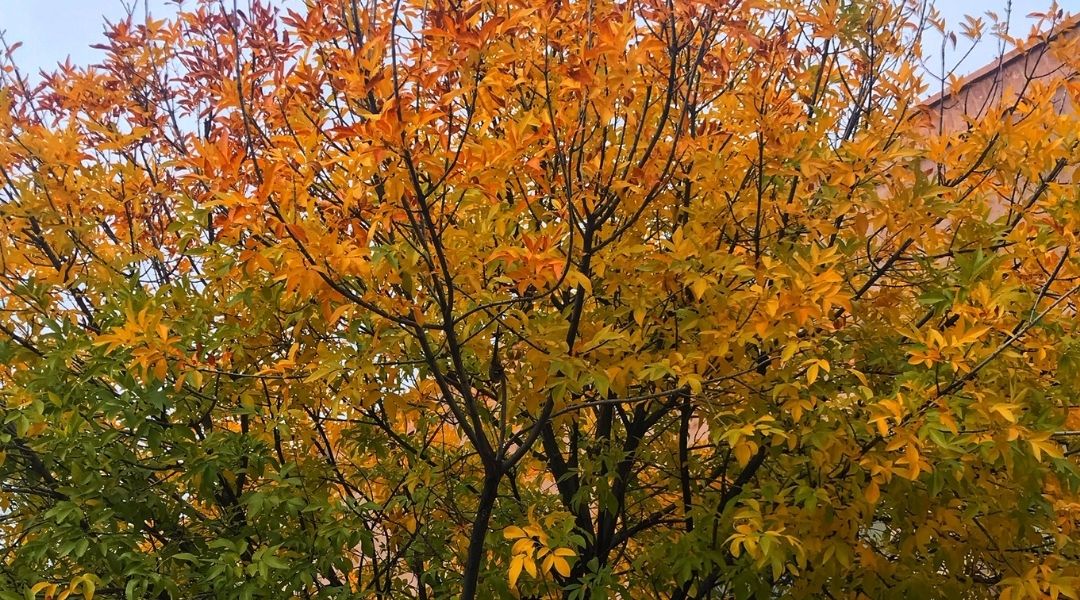
Arizona or Velvet Ash (Fraxinus velutina)
Notable features: Pale yellow flowers in winter, good shade tree, grows quickly.
Grows to: 40 feet
Leaf color: Yellow or orange
Native to: Mountain Southwest
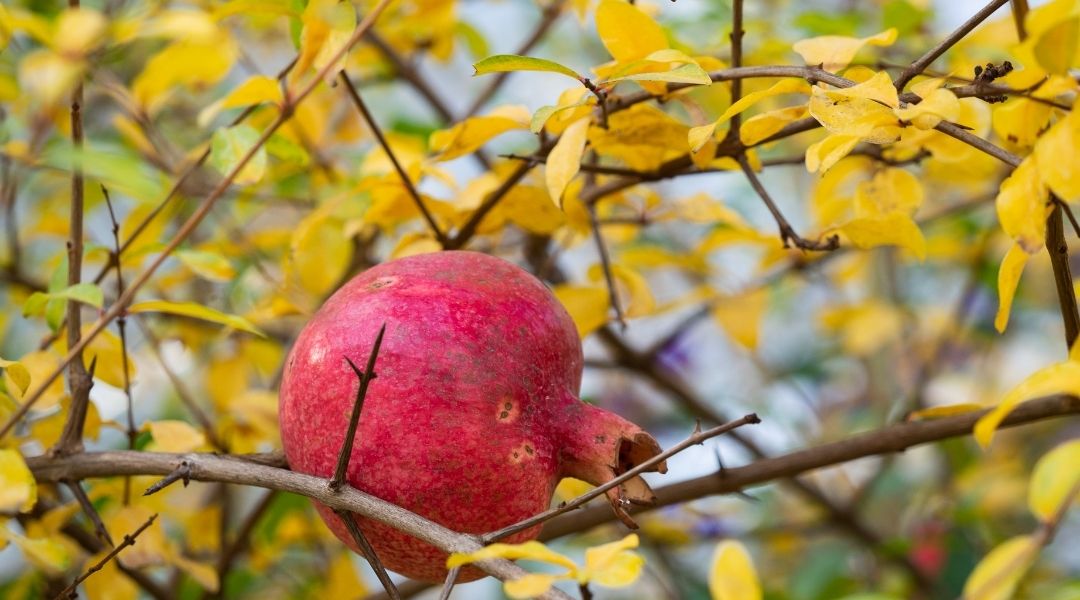
Pomegranate (Punica granatum)
Notable features: Spines, flowers on the branch tips, produces edible fruit, can host nesting birds.
Grows to: 12 to 20 feet
Leaf color: Yellow
Native to: Mediterranean
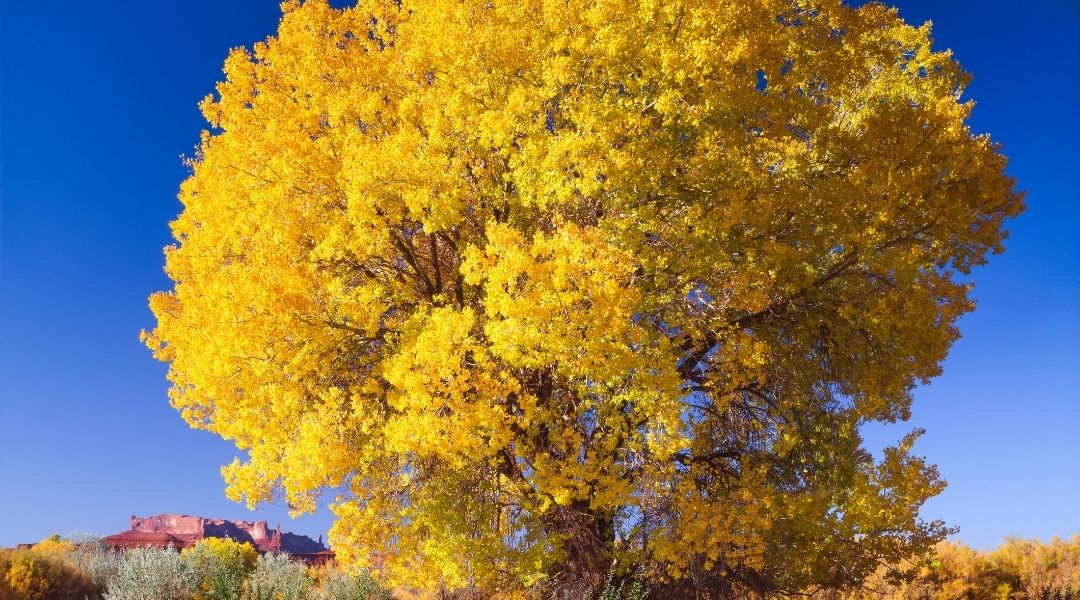
Mexican Cottonwood (Populus mexicana) or Western Cottonwood (Populus fremontii)
Notable features: Shallow root system often with exposed roots – needs lots of space to grow. Fast-growing shade tree, can be allergenic, needs more water than some other desert trees.
Grows to: 60 feet or taller
Leaf color: Yellow
Native to: Northwestern Mexico
Notable features: Tall tree can reach 110 feet, fast-growing, can produce many suckers, needs lots of room to grow and roots can be invasive.
Grows to: 110 feet
Leaf color: Yellow
Native to: California and Arizona

Chinese Pistache (Pistacia chinensis)
Notable features: Wood can become pink or red in mature trees, produces fruit in fall, needs room to branch out.
Grows to: 60 feet, can grow to 100 feet in some circumstances
Leaf color: Red
Native to: East Asia

Heavenly (or Sacred) Bamboo (Nandia domestica)
Notable features: Evergreen, woody stalks can look similar to bamboo, small white flowers in spring, berries in fall (toxic to humans), considered invasive in other parts of the U.S.
Grows to: 8 feet
Leaf color: Reddish
Native to: China and Japan
Enjoy Fall in Tucson
While fall might look a little different in the desert southwest, it is by no means less enjoyable than in other parts of the country. Fall in Tucson includes beautiful weather, the ideal time to plant, quick drives to see fall colors, and beautiful native plants.
The Tucson area also has trees that change color a little later in the year, giving us beautiful foliage to enjoy during the winter months and beyond.
We hope this article has helped you to enjoy the fall season in Tucson even more!